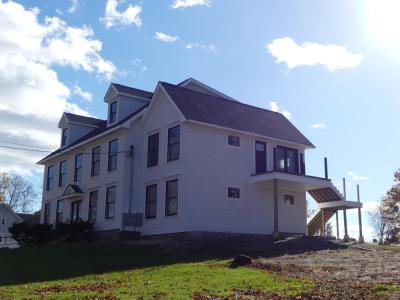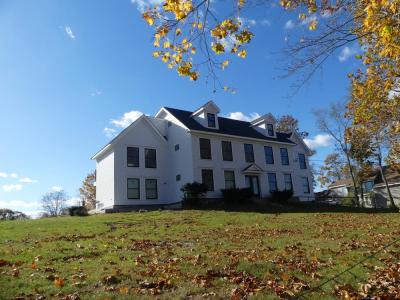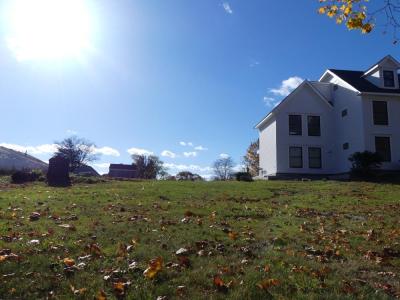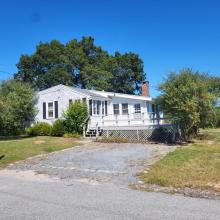Right-of-way concerns stop multi-unit housing project
A proposal for 10 units of housing at 386 Main Street has hit a wall, as the Zoning Board of Appeals did not vote to grant a variance needed for the project to move forward, during a meeting on Wednesday, Nov. 8.
The merits of the project itself did not solely determine the Board’s decision. Rather, multiple members had concerns about the Board becoming involved in a potential legal battle over the right-of-way access to the parcel of land involved.
386 Main Street has one building currently on the property. It was a historic homestead, originally owned by the Bump family, before being used as a multi-family boarding house and then falling into decline.
Its current owner, Angela McKeowen, planned to rehabilitate the current building on the property and add several additional multi-family units. The most recent set of plans include three duplexes, adding to the pre-existing building for ten units of housing.
The plan's outstanding issue was access to the property.
386 Main Street currently has access to High Street through an easement. There's no access road onto Main Street, and while the project team looked into building one, it could not because of the terrain in the area.
That leaves an easement from the property onto High Street as its only access.
The project team claims the terms of the easement allow for access to the kind of multi-family development they propose.
"The law is that you're not able to grant something that's going to frustrate the purpose of this easement," said attorney Jillian Morton, representing the project team. "And the purpose was, it's right there [in the easement], to get to the Bump homestead [now 386 Main Street] and its various subdivisions."
The property's neighbors dispute that claim. In their view, putting multiple other units on the property changes the use of it, and violates the terms of the easement.
"We know they have a right of way. This issue of the right of way is, 'Can they make use of it?' Yes, they can make use, in accordance with the way that the land was previously used," said attorney Marc Deshaies, representing the project's opponents.
The Zoning Board of Appeals did not make a determination on who had the better claim. The prospect of a legal dispute to settle the question led two members of the Board to abstain from the vote on a variance.
A super-majority of four members was required to approve the variance; with two members abstaining, it only received three votes in favor.
It is currently unclear what further options the project team has for developing the property.
Members of the Zoning Board of Appeals said up to 14 units of housing would be allowed on the property by special permit — a lower bar to clear than a variance — if all the units were together in one building.
Board Member James Eacobacci said the project team's current plans were favorable to that alternative, and to the extreme alternative of a high-density, 40B project. "I think we're getting less density than we could have forced upon us," Eacobacci said.















